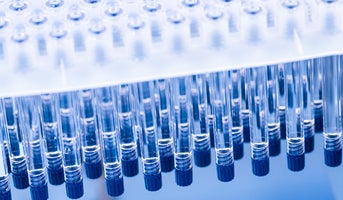What happens with the skin’s hydrobalance as we age?
Hyaluronic acid is a natural substance in our bodies. It can bind huge amounts of water and keeps our body tissues hydrated, soft and flexible.
From the age of 28, we lose around 1% per year of the hyaluronic acid in our skin. With time, or due to exposure to environmental factors, our skin may become dry, fine lines and wrinkles may start to appear and the skin can lose its natural radiance.4-5 It is often difficult to restore the skin’s inner hydrobalance by using creams that are applied on the skin surface. To hydrate and improve skin quality from within you need treatments that have a long-lasting effect below the skin surface.


Restoring hydration and skin quality from within
Natural hyaluronic acid in our bodies form long molecular chains. This naturally occurring hyaluronic acid forms and degrades quickly, in 24-48 hours.7 Restylane® SKINBOOSTERS contains hyaluronic acid that has been stabilised with a cross-linking technology so that it does not degrade at the same rate.5 As a result, Restylane® SKINBOOSTERS will provide a long-lasting hydrating effect in your skin.
By injecting micro droplets just below the skin surface, Restylane® SKINBOOSTERS helps restore the natural composition of the skin, boosts hydration and improves elasticity.2,8-10
Committed to innovation
Galderma empowers everyone to realise their own aesthetic goals by providing a diverse portfolio of injectable treatments on the market. With constant innovation and pioneering new technologies, we push the industry forward in our ambition to develop well-tolerated aesthetic treatments that have been proven worldwide.
Learn more about our solutions and our commitment to innovation here.

6,5 million treatments performed to date11
Results that last up to 15 months2
Skin insights
References
- Data on File, MA-33110.
- Wu Y et al. J Cosmet Dermatol. 2020;19:1627–35.-
- Koblenzer CS. Clin Dermatol 1996;14(2):171–7.
- Matsubara et al. Skin Res Technol 2012;18(1):29–35.
- Finn CJ et al. Dermatol Surg 2003;29(5):450–455.
- Williams S et al. J Cosmet Dermatol 2009;8(3):216–25.
- Papakonstantinou E, Roth M, Karakiulakis G. Hyaluronic acid: A key molecule in skin aging. Dermatoendocrinol. 2012 Jul 1;4(3):253-8. doi: 10.4161/derm.21923.
- Gubanova EI et al. Poster. Injections of stabilized hyaluronic acid with a sharp needle compared with a blunt microcannula for facial skin rejuvenation. IMCAS, Paris, 2015.
- Gubanova EI et al. J Drugs Dermatol 2015;14(3):288–98.
- Kerscher M et al. Dermatol Surg 2008;34(5):720–6.
- Data on File, MA-39929.



